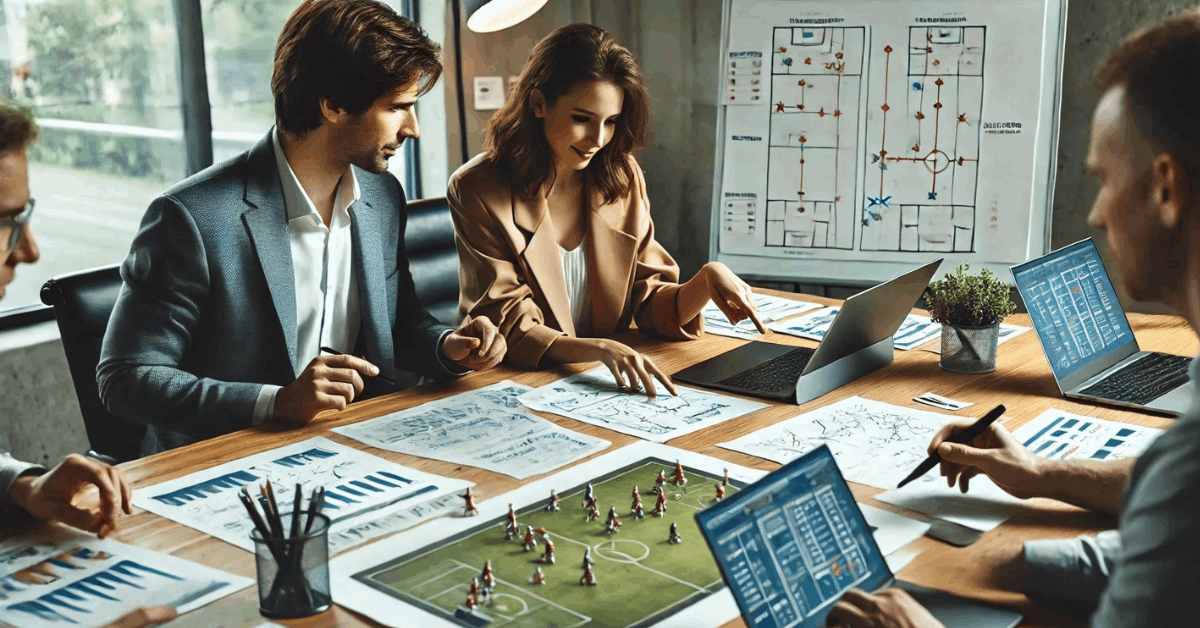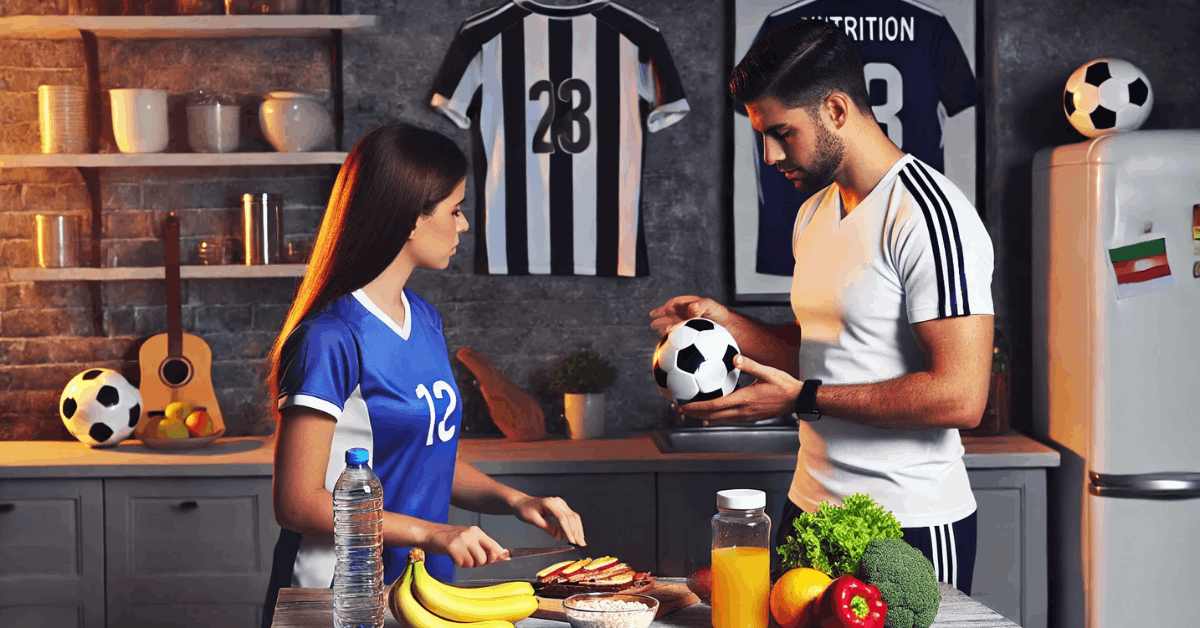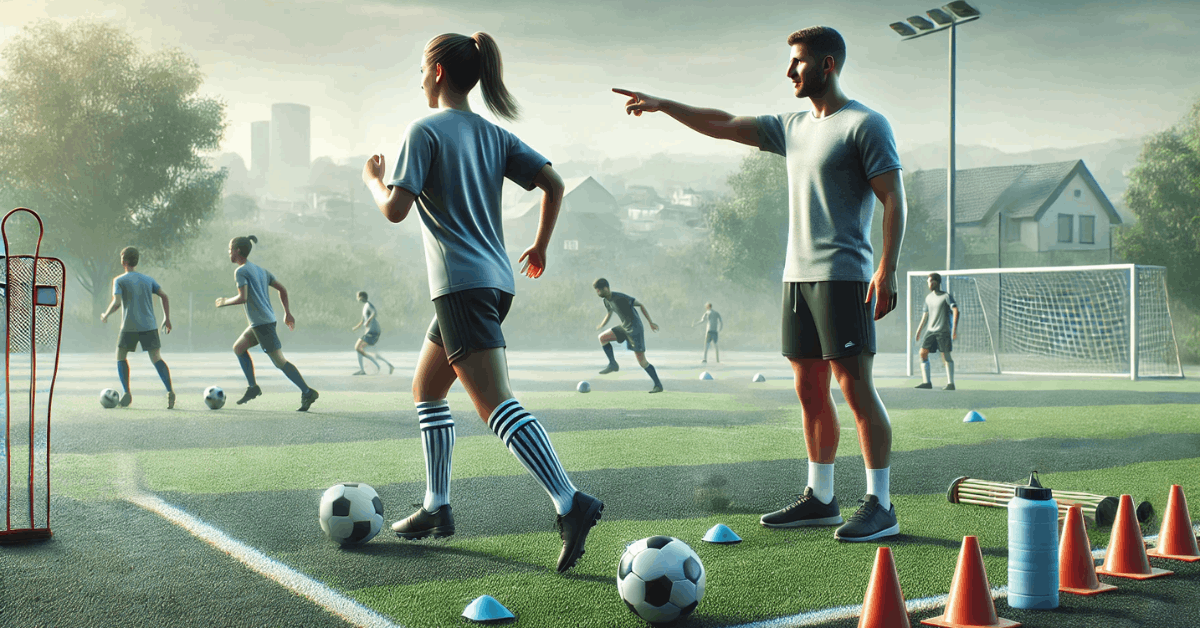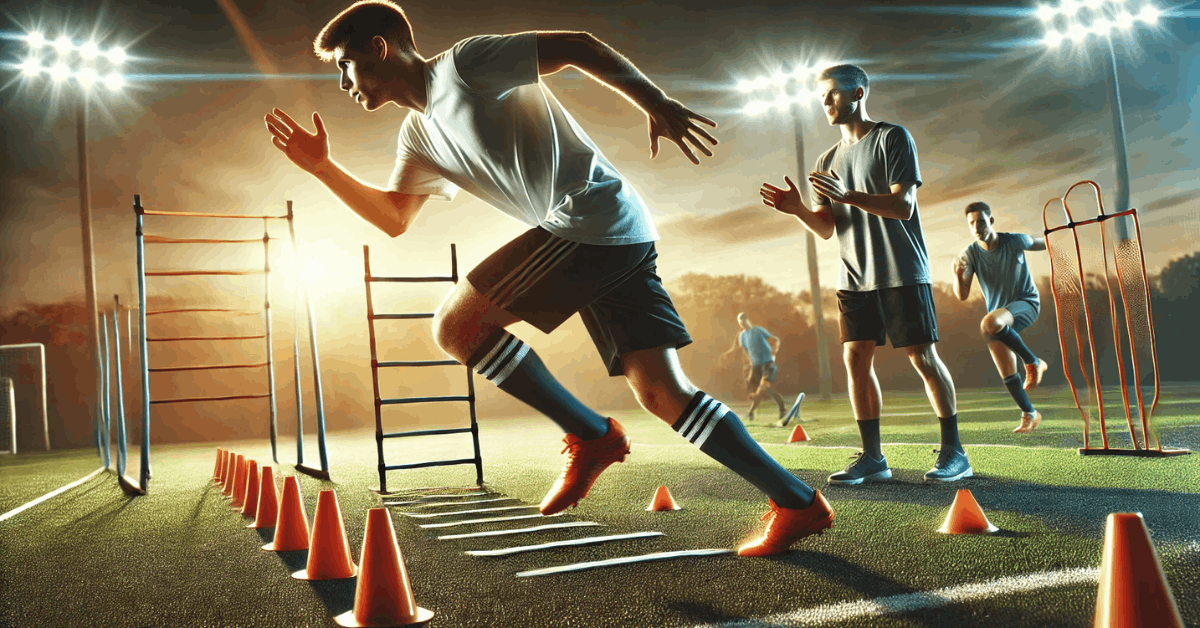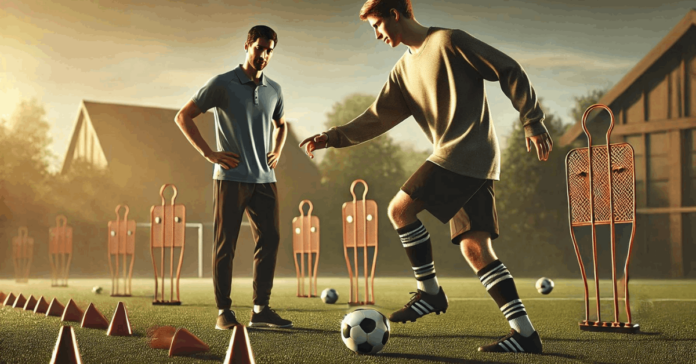
Mastering dribbling is essential for any player. This article covers training programs for ball control and skills to improve your game.
You’ll learn simple methods to sharpen your touch and footwork. With these tips, you’ll control the ball with ease.
Understanding Dribbling
This section explains the basics of effective dribbling and how it is used in both offensive and defensive situations.
What is Effective Dribbling?
Effective dribbling means keeping the ball close while maintaining control. It requires quick foot movements and agility.
Key elements include ball control, footwork, and speed. Players with these skills can easily navigate past defenders.
Dribbling in Offense and Defense
On offense, dribbling allows players to move past opponents and create scoring chances. Defensively, it helps maintain possession under pressure.
Mastering both sides of dribbling adds versatility to a player’s game, making them effective in all areas of the field.
Dribbling Training Programs
Improving dribbling skills takes consistent practice through focused training programs. This section outlines various drills, group exercises, and tech tools to help players enhance their skills.
Drills for All Skill Levels
Beginner drills focus on basic ball control using both feet. As players improve, the drills become more advanced and require faster movements.
Cone drills are great for developing precision and footwork. These drills help players adapt to different game speeds.
Advanced players add defensive pressure during drills to sharpen their skills and boost their confidence and control on the field.
Group Exercises for Pressure Play
Group exercises mimic game situations by adding pressure from defenders. Players work in small spaces to improve quick decision-making.
1v1 and 3v3 drills teach players to navigate through opponents in tight spaces. They also build confidence in handling pressure during actual games.
Group practice makes players more effective under real-game conditions.
Using Technology in Dribbling Practice
Training tools like dribbling cones and smart balls improve performance. Cones enhance footwork and precision, while bright balls track touch and control and provide feedback.
Technology boosts improvement by monitoring progress and correcting mistakes.
Combining traditional drills with tech helps players refine their skills faster, making the training process more efficient and goal-oriented.
Ball Control Techniques
Improving ball control is essential for any player to handle different game conditions. This section explains exercises that focus on touch and balance.
Exercises to Improve Touch and Control
To improve touch and control, start with basic cone drills to refine foot coordination. Vary speeds to test control under different conditions.
Use both feet equally to develop versatility. These exercises build confidence in ball handling during games.
Importance of Footwork and Balance
Good footwork and balance are key to maintaining control. Focus on light, quick steps to stay balanced while moving with the ball.
Maintaining balance helps you change direction smoothly. These skills allow you to keep control under pressure from opponents.
Advanced Dribbling Skills
Advanced skills involve mastering different types of movements. This section covers vital types and strategies for specific game situations.
Mastering Different Types of Dribbles
Every player should know three main types of dribbles. Each type has a specific purpose and improves overall control.
- Speed Dribble: Used for moving quickly through open spaces, ideal for fast breaks and when there’s minimal defensive pressure. It helps cover ground fast while maintaining control.
- Control Dribble: This maneuver maintains close control in tight spaces and allows for quick changes in direction. It is best for guiding through defenders with precision.
- Defensive Dribble: Focuses on shielding the ball from opponents while moving. Used to protect possession and create space under pressure.
- Crossover Dribble: Rapidly switches the ball between feet to confuse defenders. Effective in one-on-one situations for quick direction changes.
- Feint Dribble: A deceptive move to mislead defenders and create space. It helps break through tight defenses by faking a motion.
Situation-Specific Dribbling Strategies
Game scenarios require different strategies for success. In attacking situations, players should use quick moves to bypass defenders.
When defending, focus on shielding the ball to avoid turnovers. Adjust your approach based on field position and pressure.
These strategies help you control the flow of the game.
Incorporating Physical Fitness and Agility Training
Physical fitness is crucial for improving ball control and movement on the field. Agility training ensures quick responses in various game situations.
How does Physical Conditioning impact ball Control?
Good conditioning increases endurance, helping you stay sharp throughout the game. Strong legs provide better control and faster movements.
Flexibility reduces the risk of injury when making quick turns. Strength training supports balance, which is vital in keeping the ball under pressure.
Regular cardio improves stamina, allowing players to maintain focus. Overall fitness enhances both speed and control over the ball.
Specific Fitness Routines That Complement Ball Control
Agility drills, like ladder exercises, improve foot speed and coordination. Plyometrics increase explosiveness for faster changes in direction.
Strength training for the legs helps keep balance and stability during quick movements. Core exercises are key to maintaining good posture and control when facing defenders.
Interval running improves stamina, allowing you to perform well during intense game moments. Mixing these routines boosts your ability to control the ball under various conditions.
Monitoring Progress and Adapting Training
Tracking progress is essential for continuous improvement. This section explains how to set goals and adjust training based on results.
Setting Realistic Goals and Benchmarks
Start by setting small, achievable goals to keep motivation high. Break your progress into steps, such as improving speed or touch.
Track your development by measuring how quickly and accurately you perform specific moves. Review your goals regularly to ensure you’re on track.
Adjust them based on performance to push yourself further. Setting realistic benchmarks helps avoid frustration and keeps the focus on gradual improvement.
Using Feedback and Video Analysis to Refine Techniques
Video analysis is a powerful tool for reviewing your performance—record training sessions to spot improvement areas.
Use feedback from coaches or teammates to fine-tune your technique. Look for patterns of mistakes and adjust your practice routines accordingly.
Reviewing video footage helps correct bad habits and reinforces good ones. Combining visual feedback with regular practice speeds up the learning process.
Final Thoughts on Mastering Dribbling
Mastering dribbling is about combining ball control, agility, and skill development. Regular practice and the right training programs will help you improve quickly.
Focus on key techniques and adapt your training based on feedback and progress. Doing this will boost your confidence and control on the field. Consistency is the key to mastering this essential skill.


